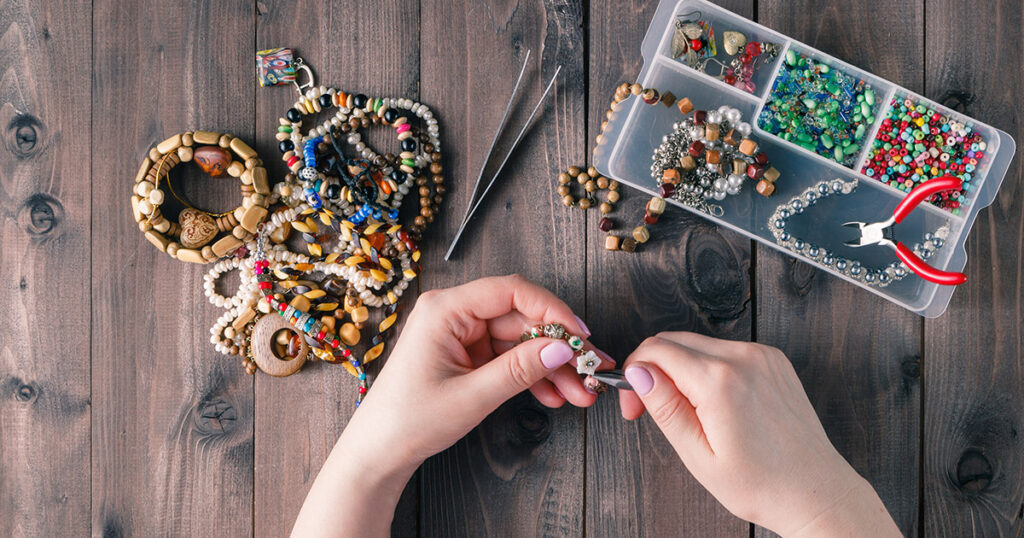Gone are the days of isolated online shopping sprees. Today, a vibrant new era of collectible exchange culture is blossoming, fueled by a desire for shared experiences and connections built around passion. This isn’t just about buying and selling; it’s about forging communities, trading stories alongside treasures, and finding a deeper meaning in your shopping experience.
Digital collectible exchanges offer a platform where individuals swap not only goods, but also stories, passions, and connections. Retail experience is no longer just about making purchases; it’s about building communities and fostering connections through shared passions and interests.
The sharing economy has laid the groundwork for this shift and it’s clear that resale is firmly embedded in the fashion landscape. ThredUp’s Resale Report underscores this with nearly two in every three consumers making at least one online secondhand purchase in 2023.
Thrifting, once a refuge for budget-conscious shoppers and treasure hunters, has undergone a transformation of its own. As the popularity of thrifting has surged among consumers with disposable income, it has inadvertently driven up prices and diminished accessibility for people who rely on its affordability the most (Business Insider). This has spurred a countermovement among younger demographics, who seek alternative avenues to express their style and values and offers brands a gateway to new consumers.

Collectible Exchange Culture
The shift from mere purchasing to a culture of sharing and trading has been propelled by the emergence of new technologies enabling store and online platforms to facilitate exchanges among consumers. We’ve seen it with transportation (Lyft), lodging (Airbnb), and now fashion.
With fashion resale platforms like Re-SEE, Depop, Poshmark, Vestiaire Collective, and Dora Maar facilitating these exchanges, the barriers to entry have never been lower. Anyone can join the collectible exchange movement, whether they’re looking to declutter their closet or even shop a celebrity’s closet.
This trend of sharing and trading, which consumers do directly with one another on social platforms like Facebook Marketplace, Instagram, and Discord, offers consumers increased access to goods and services that may have otherwise been out of reach. Some fashion brands are even partnering with resale platforms to get their products in front of a new audience. Whether it’s vintage clothing, rare jewelry, or unique accessories, collectible exchanges help individuals acquire coveted items while forging connections with others who share their passions and interests.
Collectible exchange culture shows us that this kind of shopping goes beyond mere transactions; exchanges create a space where individuals can come together, share their passions, and form meaningful connections with others who appreciate the same things.
Community Through Recommerce
More than just platforms for buying and selling, collectible exchange foster a sense of community among users through:
Shared Interests: Collectible exchanges attract users with similar interests, whether it’s vintage clothing, rare sneakers, or handmade jewelry. By bringing together like-minded individuals, these platforms create a sense of belonging and camaraderie.
Interactive Features: Many collectible exchanges offer opportunities for interaction, such as commenting, liking, and following other users. This fosters engagement and encourages users to connect with one another, forming virtual communities centered around shared passions.
Supportive Environment: Collectible exchange users often offer support and encouragement to one another. Whether it’s sharing styling tips, offering advice on pricing, or simply sharing excitement for each other’s finds, these platforms create a supportive environment where users feel valued and appreciated.
Trading and Swapping: The act of trading and swapping items encourages interaction and collaboration among users. It’s not just about acquiring goods; it’s about building relationships and fostering connections through the exchange of unique and cherished items.
Local Meetups and Events: Some collectible exchanges facilitate local meetups and events, allowing users to connect offline as well. These gatherings provide an opportunity for users to bond over their shared interests and deepen their sense of community.
It’s no longer just about buying a product; it’s about joining a tribe of individuals who appreciate the value of unique and curated items. The thrill of discovering hidden gems and the satisfaction of finding a new home for your pre-loved treasures add an emotional depth to the retail experience that traditional transactions lack. Think of the stories a consumer is buying, and also the ability to share a story of the product being sold.

As the retail landscape continues to evolve, collectible exchanges are poised to become a staple in the new retail experience. Celebrating individuality, fostering connections, and promoting sustainability, this trend is not just a passing fad, but a reflection of a broader shift toward mindful consumption.
According to ThredUp’s 2024 Resale Report, 74% of retail executives who don’t currently offer resale are either considering or planning on getting into resale in the future. Brands and retailers can tap into the sharing economy and reach new customers through collectible exchange. By engaging with these platforms, brands can enhance their reputation and foster greater customer loyalty.
Traditional storefronts must adapt to meet the changing needs and expectations of consumers, or risk becoming obsolete. Some retailers have embraced the sharing economy by incorporating resale platforms into their business models, capitalizing on the growing demand for pre-loved and sustainable products. Brands that recently launched their own resale programs include: Journeys, Smartwool, Fabletics, H&M, Toms, Kate Spade, and J. Crew.
Collectible exchanges represent a transformative shift in the retail experience, offering consumers a more interactive and inclusive way to shop. As the trend continues to evolve, it will be essential for brands and retailers to embrace the sharing economy and adapt to meet the changing needs and expectations of consumers.





